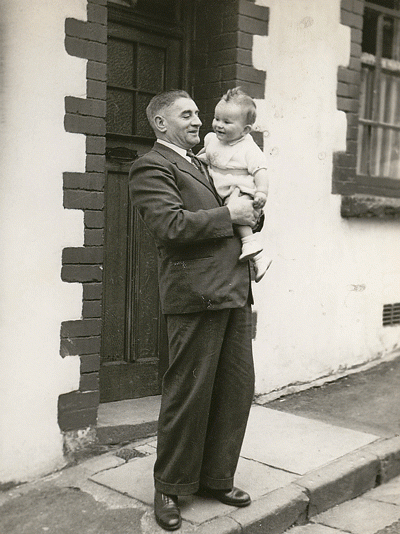The Road to Penallta Colliery 3: A Situated History, 1930
When I was very young, Pop (my maternal grandfather) took his grandchildren ‘down the Duffryn’ to play. This was Duffryn Park, Blaina. We’d always end up buying an ice cream at the Pilgrims Garden, near by, before returning home. The garden had been set up by a group of philanthropic women from a religious order based in Kent. It was intended to serve as a place of relaxation and restitution for retired miners in the locality. The site was landscaped from a reclaimed ash tip, and represents a remarkable early example of urban regeneration. It was opened in 1930 — the same year as the British Movietone News crew descended Penallta Colliery to record the ‘first sound pictures of a British Coalmine’. Following the closure of the colliery in 1991 it, too, underwent a process of regeneration, as some 180 acres of derelict land surrounding the abandoned workings was transformed into a park.

The colliery was sunk in 1905 by the Powell Duffryn Steam Coal Company Ltd. Duffryn Park was created by unemployed miners in 1928. It’s unlikely that its name bore any relation to the Company. ‘Duffryn’ is the anglicised form of ‘Dyffryn’ which, in Welsh, means ‘valley’. Thus, given the park’s situation at the top end of the Ebbw Fach valley, the name may have been an obvious choice. Moreover, none of collieries in Blaina and its vicinity were owned by Powell Duffryn. And, while a prestigious enterprise, its doubtful whether Company would have been considered worthy of a dedication (for the reasons described below). Gareth Salway writes:
Powell Duffryn was a company that concentrated on developing low-cost collieries equipped with the latest technology; its collieries considered by contemporaries as examples of the best and most modern installations to be found anywhere in Europe.
Gareth Salway, Penallta Colliery: An Illustrated History 1905-1991 (Caerphilly: Groundwork, 1993) 1.
Penallta Colliery was the jewel in Powell Duffryn’s crown. By 1930, its maximum production figure was reached, when 2,808 men produced 975,603 tons of saleable coal. (Five years later, the colliery would hold the European record for coal winding.) Its impressive output alone may have marked it out as eminently well-suited to being the subject for a mini-film documentary, made that year.

What those ‘first sound pictures’ neither show nor tell, however, is that the Powell Duffryn Company’s had earned itself an appalling reputation as an employer. Costs were kept low because the wages that it paid the colliers were poor, as were their conditions and safety at the workplace. The South Wales’ Miners’ Federation published an excoriating report to this effect in 1930. Little wonder that the Company was a bitter opponent of the union. While the colliery never suffered a disaster (defined as an incident causing five or more fatalities), as had many pits on the South Wales’ coalfield, Powell Duffryn’s dismissive attitude regarding the colliers’ welfare may have contributed to at least 23 deaths between 1907 and 1914 alone. The Mines Inspectors Report for that period record deaths caused variously by runaway drams, derailments, roof-fall due to weakened timbers, electric shock, inferior materials, inadequate training, and tiredness brought on by overwork. For these reasons, the colliery was known among the workforce and their families as the ‘slaughter house’.

By 1930, Pop had lost two brothers, both of whom were (like him) colliers, to accidents that’d occurred underground at Beynon’s Colliery, Blaina. One lost his life in a fire and another, by electrocution. Beyond the cold forensic accounts of fatalities in mining reports, such incidents represented a tragic and sometimes avoidable loss of not only life but also either the whole or part of a family’s income as a result. Compensation settlements made by accident and insurance funds were either wholly inadequate, or difficult to access, or short-term.
Those colliers who weren’t fatally injured as a result of serious accidents were often left severely disabled and unable to work for the remainder of their lives. Others developed respiratory diseases such as silicosis and pneumoconiosis, caused by airborne silica and coal dust, from which they later died. Initially, only the former condition was covered by insurance. According to the Glamorgan Archive:
From 1933 to 1948, 17,000 miners in Wales had left their underground work due to pneumoconiosis or silicosis. In 1928 coalminers were eligible for silicosis compensation. Many coal miners were refused compensation as this was not the disease they had.

It was not until 1943, and the establishment of the Industry (Pneumoconiosis) Compensation Scheme, that miners could claim for both diseases. My ‘Uncle’ Alf had been incapacitated by pneumoconiosis in the late 1970s. I visited him on my weekends home from art school. He’d be propped up in a bed surrounded by oxygen tanks in the front room of his terraced house in Abertillery, Monmouthshire. Alf was barely able to talk, and slowly suffocated to death during the last stages of the disease. (Covid-19 sufferers in hospital Intensive Care Units are a vivid reminder of the excruciating discomfort that many colliers had experienced.) He wasn’t really my uncle. In the valleys, ‘uncle’ and ‘auntie’ were respectful and affectionate appellations afforded to neighbours principally. Familial uncles and aunts were referred to by their forenames only.

Alf Tillings had worked as a collier in Six Bells Colliery, Abertillery. (In 1960, it was the site of a major underground explosion that claimed the lives of 45 miners.) In 1930, the colliery was phased-out due to the downturn in the demand for coal caused by the economic crash a year earlier. It was revived six years later. Penallta Colliery’s resilience and continued profitability in 1930, against the backdrop of world financial decline, is a credit to those colliers who worked there, rather than to those who worked the colliers.




